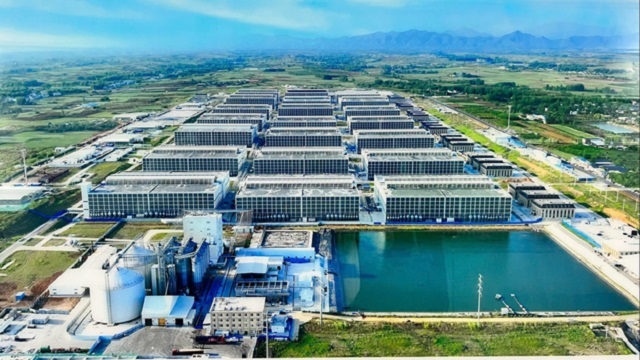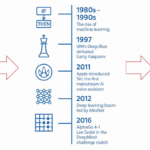During the working session, Deputy Minister Phung Duc Tien reviewed the achievements of Vietnam’s livestock industry over the past 15 years. From a small-scale industry, Vietnam has risen to become the 5th largest pig herd in the world, 6th in output, and 4th in pig meat consumption. In the period of 2020-2024, the livestock industry maintained the fastest and most stable growth rate in the agricultural sector, contributing nearly 30% to the industry’s GDP and 5% to the country’s GDP.
Deputy Minister Phung Duc Tien and the delegation visited and inspected the multi-story pig farm model of Muyuan. The delegation highly appreciated the multi-story farm model, which features advanced technologies in automatic management, environmental treatment, and disease control, as well as digital transformation. Despite higher initial investment costs of 1.5-1.8 times, this model is efficient as it can increase land use efficiency by 4-10 times, better control diseases, and meet high animal welfare standards.
In Vietnam, the modern pig farming model is being replicated. The issuance of the National Standard TCVN 14209:2024 on multi-story pig farms has provided a legal basis for businesses to implement this model. However, the Deputy Minister also emphasized the need for strict management of planning, design, and operation to control the risks of diseases, environmental pollution, and ensure animal welfare.
For China, Deputy Minister Tien proposed three orientations for the development of modern livestock farming. First, it is necessary to invest in research on low-emission, biologically safe multi-story farming models. Second, apply genetic technology, vaccines, and biological products to reduce antibiotic dependence. Third, promote the digitization of the production chain, integrating AI and Big Data into livestock management. All these efforts aim to achieve the goal of net-zero emissions by 2035, in line with Vietnam’s commitment at COP26.
Multi-story farming model: More advantages than disadvantages
Muyuan Group is a world-leading enterprise in modern and circular pig farming. Since 2020, the Group has developed a multi-story pig farm model, with 71 buildings constructed so far. The slaughtering capacity is 6.5 million pigs/year in major cities such as Beijing, Nanjing, Chengdu, and Haikou. The pig population reaches 60 million, and the slaughtering capacity is about 13 million pigs/year (2023 data).

Muyuan’s multi-story farm
|
After a significant decline in 2023, Muyuan’s revenue in 2024 was nearly CNY 138 billion (nearly VND 500 trillion), up 24% over the previous year; net profit was CNY 17.9 billion (about VND 65 trillion), recovering from a loss of CNY 4.26 billion in the previous year, and up 35% from 2022. Pig sales volume reached nearly 72 million pigs, and slaughter volume was about 12.5 million pigs.
Notably, in 2024, a Vietnamese enterprise signed a strategic cooperation agreement with Muyuan, namely BAF Vietnam Agricultural Joint Stock Company (HOSE: BAF). By March 2025, BAF had established three subsidiaries in Tay Ninh, with a total capital of VND 760 billion, aiming to develop one of the first multi-story pig farming projects in Vietnam.
According to BAF, the project has a scale of 155 hectares and is a closed complex consisting of 16 buildings, each with 6 floors, integrating a pig breeding farm for sows and meat pigs, and a feed mill. The farm has a scale of up to 64,000 sows and 1.6 million meat pigs, along with a feed mill with a capacity of 600,000 tons/year. BAF is currently completing the necessary legal procedures to start construction this year.
According to Mr. Nguyen Van Minh, Deputy General Director of BAF, the multi-story farm will apply automation technologies from Muyuan, integrated with AI processing; a camera system to monitor temperature, humidity, and air quality; and a deodorization system that can remove up to 98% of odors and filter and disinfect the air before discharging it into the environment.
Multi-story farms will become a new trend due to the increasingly limited availability of large-scale livestock farming land, as land is also used for other purposes such as crop cultivation. In addition, there are limitations in terms of terrain, as flat and large enough areas for traditional farms are difficult to find in mountainous regions in the northern part of the country.
As for the disadvantages, BAF also acknowledged that the initial investment cost of a multi-story pig farm is about 50% higher than that of a conventional farm. However, the multi-story farm has advantages in terms of biosecurity due to its six separate floors. Each floor will house pigs at different stages, from gilts, pregnant sows, farrowing sows, to weaned pigs, and finishing pigs, thereby preventing cross-infection between groups, reducing disease outbreaks, and minimizing mortality rates. Moreover, the air filtration system helps control diseases such as pseudorabies and Porcine Reproductive and Respiratory Syndrome (PRRS) more effectively.
In addition, land use efficiency is improved, saving up to five times the land area. For example, a farm in China with an area of 85 hectares can accommodate 2.1 million pigs. A traditional farm with a similar scale would require an area of 450 hectares. Another farm with 4,000 sows and an annual output of 100,000 meat pigs only needs 6.7 hectares, while a traditional farm would need nearly 60 hectares.
Hai Au
– 11:03 03/06/2025
The Oil and Gas Industry Under Pressure to Reduce Carbon Emissions
The oil and gas industry is at the forefront of sectors facing immense pressure to reduce carbon emissions. As a significant contributor to global greenhouse gas emissions, it also has a pivotal role to play in the transition to a low-carbon future.
The Cost of Congestion: Unraveling the Billion-Dollar Traffic Woes in Hanoi and Ho Chi Minh City, with a Revolutionary ‘Traffic Circle’ Solution
“With his keen eye for optimization, Delegate Nguyen Van Canh proposes a revolutionary idea to alleviate traffic congestion at major roundabouts in urban areas across Vietnam. His suggestion, inspired by the successful implementation at the Phu Dong roundabout in District 1, Ho Chi Minh City, offers a glimmer of hope for smoother traffic flow in the country’s bustling metropolises.”
“Nestlé: Committed to Vietnam’s Sustainable Future”
The food manufacturing industry is solidifying its position as one of the pivotal pillars of Vietnam’s processing and manufacturing sector. Alongside its growth trajectory are challenges that businesses must overcome to thrive.




















